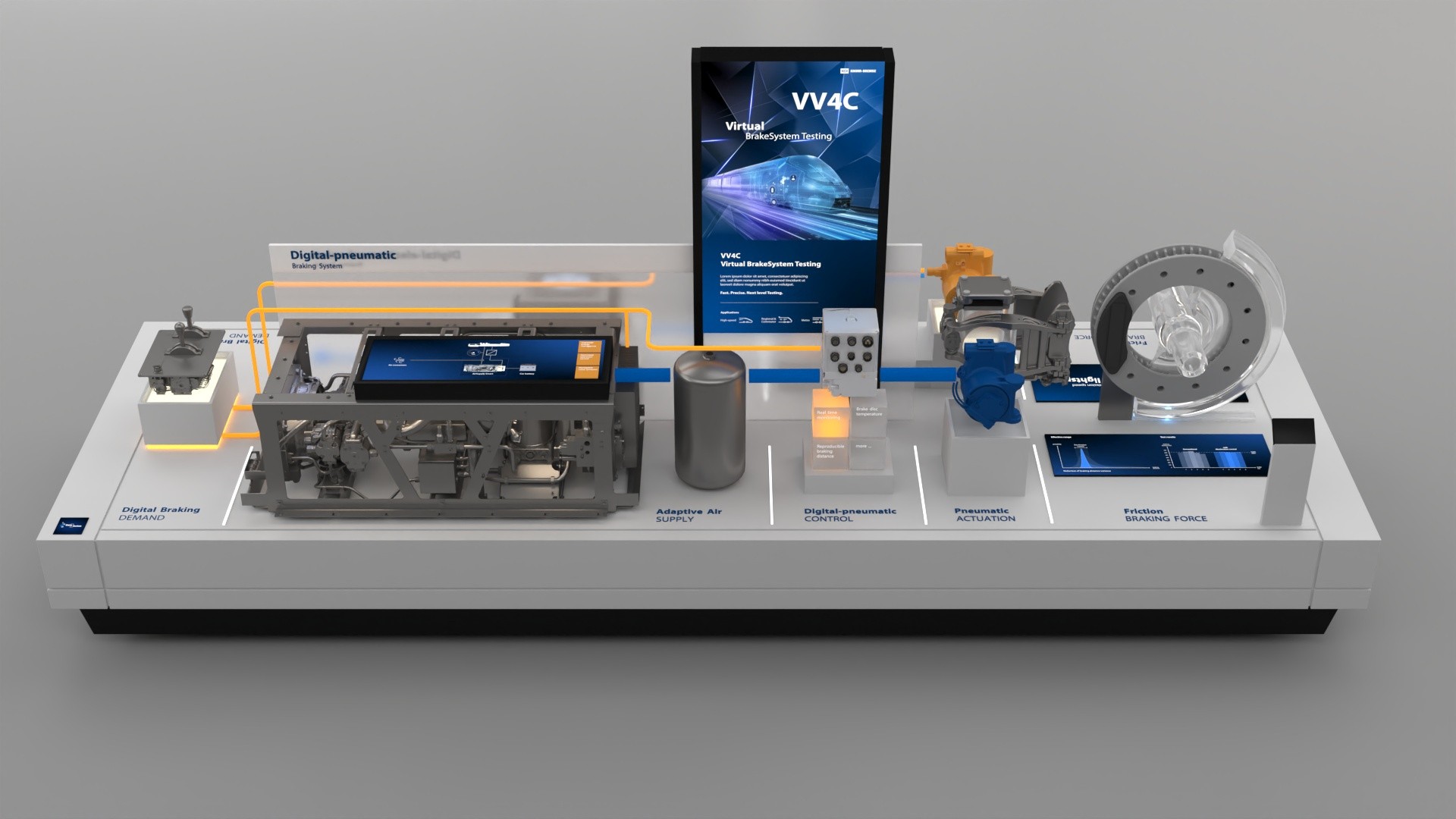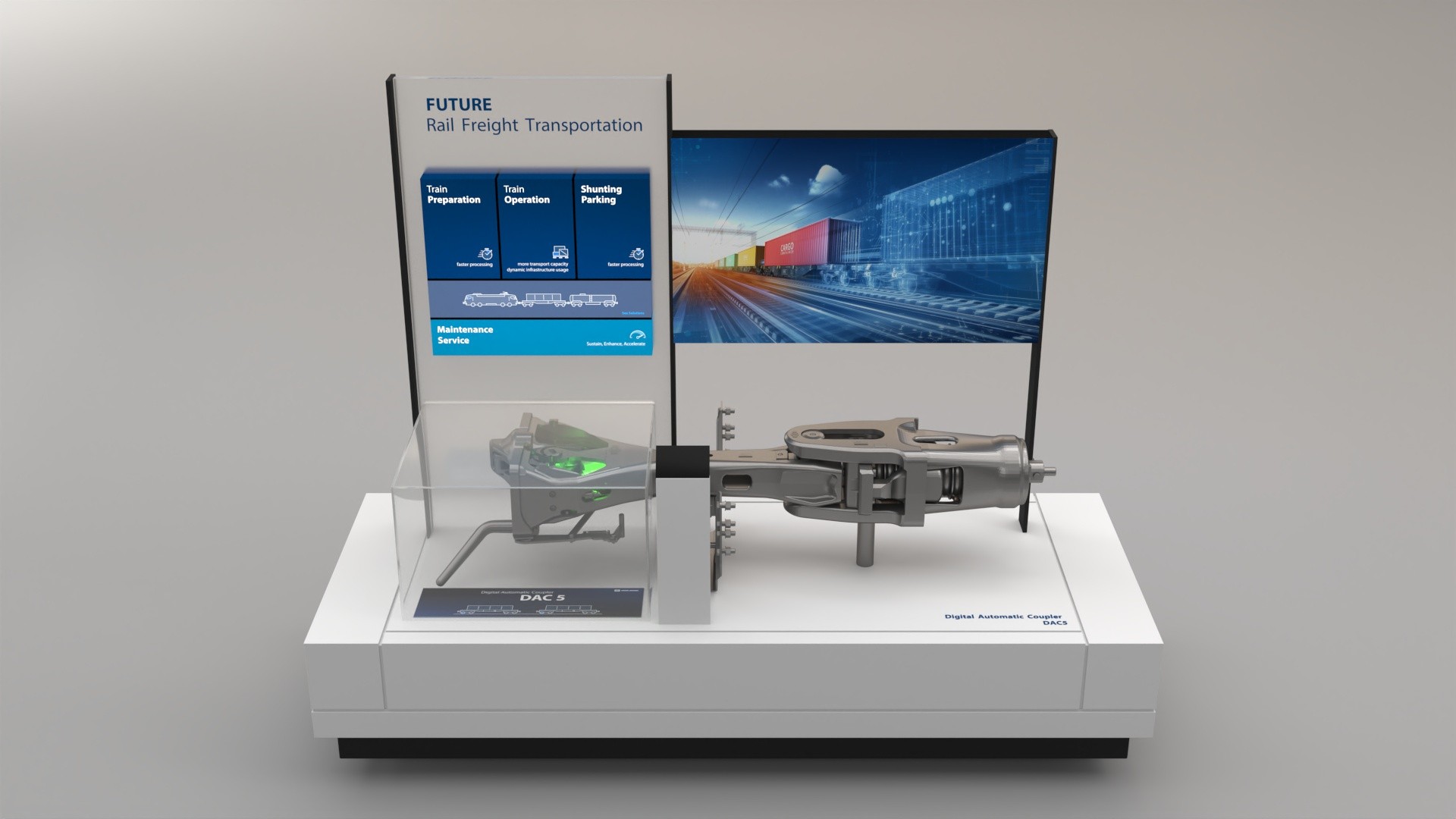
It is impossible to indefinitely expand road and rail infrastructure – especially in urban areas. To ensure that the flow of traffic remains stable and efficient, new, interlocking mobility strategies are required. Our highly innovative solutions are helping to dynamically optimize the utilization of existing network infrastructure. Higher availability at vehicle and fleet level, together with demand-driven, adaptable transportation capacity in both passenger and freight sectors, are the key factors here.
"Evolution of Braking" is the fundamental guiding principle for improved braking dynamics and higher vehicle availability. Our aim is to increase transport capacities and stabilize processes. The digital-pneumatic (brake-by-air) and digital-electromechanical (brake-by-wire) braking systems and their functionalities are presented on a six-meter-long exhibit.
Why these two approaches? The pneumatic and electropneumatic brakes have already undergone years of technological and evolutionary progress. However, with a focus on increasing capacity, saving energy and optimizing life cycle costs, there is no way around the digital electromechanical brake system. It will not and should not replace pneumatic systems in the foreseeable future, but it does offer an attractive alternative for certain applications.
Product Brochures
All product brochures for the "Evolution of Braking" exhibit can be found here.
Product Catalog Microelettrica



Hydraulic braking systems offer great advantages, especially in urban areas, e.g. for light rail vehicles and commuter trains. Our space-saving 'HydroControl Smart' is a new family of electrohydraulic supply and control units. Particularly compact, lightweight, robust and, above all, intelligent. Versions with and without integrated control electronics are available.
Detailed information on our braking systems (digital-pneumatic, digital-electromechanical & digital-hydraulic), on our “Reproducible Braking Distance (RBD)” approach and on Virtual Validation for Certification (VV4C) is available in the form of digital applications on the nearest screen island.
The latest generation of sanitary systems from our company brand Evac are flexible, intelligent and make trains more available. The exhibit will showcase the system’s real-time monitoring of key operating data such as temperatures and fill levels. This feature helps to identify faults, defects and other challenges at an early stage, so they can be rectified before they impair the train’s operation.
With its automation systems and digital services, our “Future Rail Freight Transportation” concept paves the way for the rail freight transportation of the future. Our Digital Automatic Coupler (DAC), also known as 'FreightLink', is a key enabler technology. It not only automates the mechanical-pneumatic coupling and uncoupling of freight wagons, but also supports highly reliable, train-wide power and data lines. Further DFT functions, such as Automatic Train Composition Detection or Automated Brake Test ('FreightControl'), are explained within the digital application on the exhibit. In addition, wireless systems will be presented as an alternative to DAC automation solutions. The "DAC 5", which offers the option of automatic uncoupling, will be physically displayed. The highlight is the cut-open coupling head, in which the uncoupling/coupling process can be watched.


At one of our interactive screen islands, you can explore our Platform Screen Door Systems (PSDS) through an engaging digital application. PSDS enhance safety in stations, reduce energy consumption, integrate with automated processes, and ensure smooth passenger flow as it allows for quicker boarding and exiting, leading to more efficient and punctual train operations.



